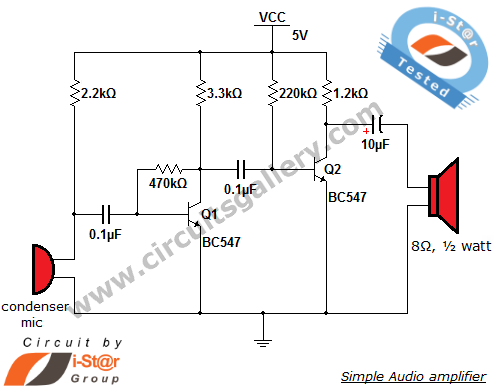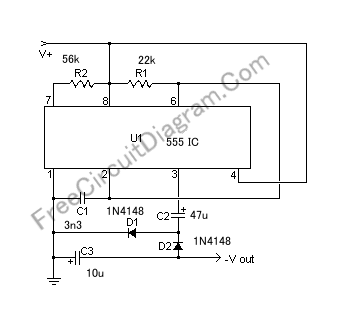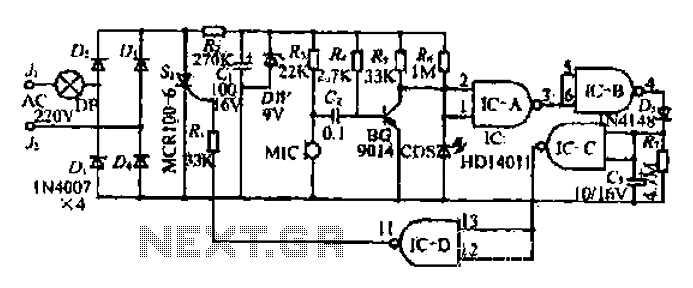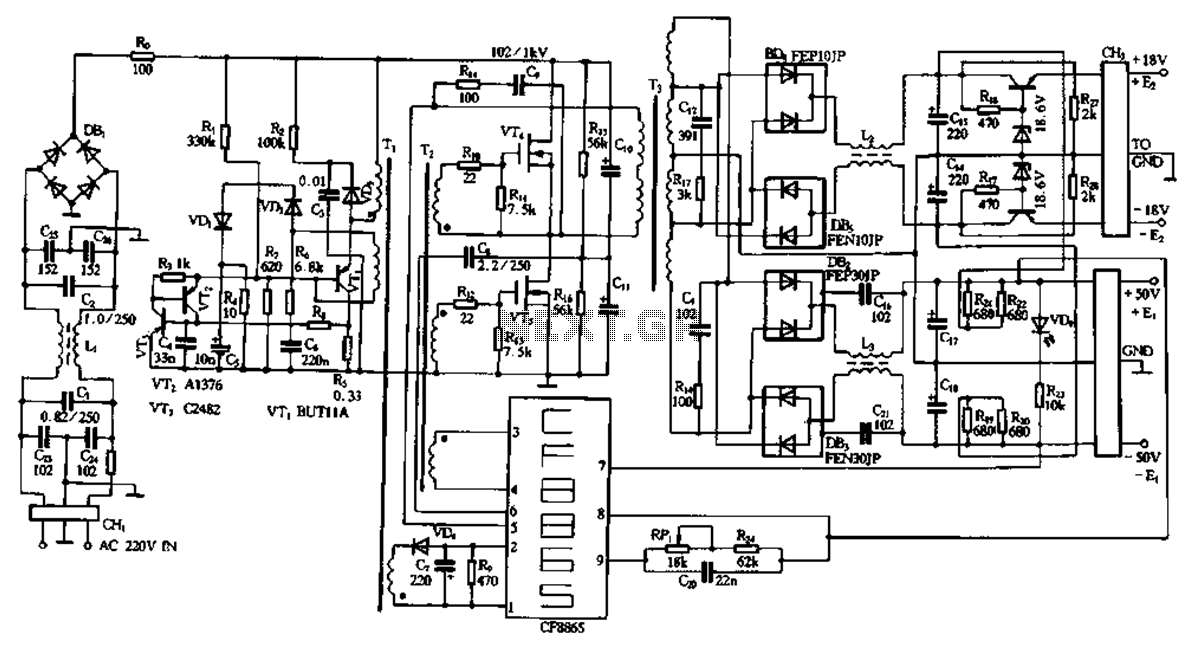
Simple condenser microphone mini audio amplifier circuit schematic

This circuit diagram is a simple and effective design for amplifying weak signals from a capacitive condenser microphone. It is suitable for sound sensing applications and various automatic robotic sensors. While a more complex audio amplifier circuit using the 1895 IC has been previously published for sensitive applications, this DIY audio sound amplifier for condenser microphones is compact and easy to implement, utilizing only two BC547 transistors and a few discrete components. The total cost to construct this circuit is approximately $2, making it an economical choice for amplification needs in electronics, such as a pre-amplifier for FM transmitters. Transistor Q1 is set up in a collector-to-base biasing configuration, facilitated by a 470kΩ resistor that provides negative feedback to Q1. The output from Q1 is accessible at its collector, which is connected to the input of transistor Q2 through a 0.1 µF capacitor, ensuring the removal of any DC voltage resulting from the biasing of Q1.
The circuit operates by first capturing sound waves through the condenser microphone, which generates a weak electrical signal. This signal is then fed into the base of transistor Q1, which is configured to amplify the signal. The 470kΩ resistor plays a critical role in stabilizing the operating point of Q1 by providing negative feedback, which enhances linearity and reduces distortion in the amplified output.
The output signal from the collector of Q1, which is significantly stronger than the input, is passed through a coupling capacitor (0.1 µF). This capacitor serves to block any DC component while allowing the AC audio signal to pass through to the base of transistor Q2. Transistor Q2 further amplifies the signal, providing an output that can drive subsequent stages of amplification or processing.
The choice of BC547 transistors is suitable for low-power applications, making this circuit ideal for battery-operated devices. The simplicity of the design, along with the minimal number of components required, facilitates easy assembly on a breadboard or PCB. This circuit can be an excellent choice for hobbyists and engineers looking for a cost-effective solution to amplify audio signals from microphones in various electronic projects.This is a very useful and simple circuit diagram for amplifying weak signal from a capacitive condenser microphone. You can use this circuit for sound sensing applications and some automatic robotic sensors. We have already posted an efficient audio amplifier circuit using 1895 IC, it is somewhat complicated and is suitable for very sensitive appl
ications. But this condenser microphone DIY audio sound amplifier is very small and simple to implement because it uses only two BC547 transistors and some discrete components. You can construct this circuit with a minimum price of $2. This circuit is apt for cheap amplification purposes in electronics such as pre amplifier for FM transmitters.
Transistor Q1 is configured as collector to base biasing mode. This is accomplished via 470k © resistance. This resistor provides negative feedback to the transistor Q1. The output of Q1 becomes available at the collector (across 3. 3k © resistor), which is the input to the transistor Q2 via a 0. 1 µF capacitor. The capacitor removes DC voltages due to the biasing of Q1. 🔗 External reference
The circuit operates by first capturing sound waves through the condenser microphone, which generates a weak electrical signal. This signal is then fed into the base of transistor Q1, which is configured to amplify the signal. The 470kΩ resistor plays a critical role in stabilizing the operating point of Q1 by providing negative feedback, which enhances linearity and reduces distortion in the amplified output.
The output signal from the collector of Q1, which is significantly stronger than the input, is passed through a coupling capacitor (0.1 µF). This capacitor serves to block any DC component while allowing the AC audio signal to pass through to the base of transistor Q2. Transistor Q2 further amplifies the signal, providing an output that can drive subsequent stages of amplification or processing.
The choice of BC547 transistors is suitable for low-power applications, making this circuit ideal for battery-operated devices. The simplicity of the design, along with the minimal number of components required, facilitates easy assembly on a breadboard or PCB. This circuit can be an excellent choice for hobbyists and engineers looking for a cost-effective solution to amplify audio signals from microphones in various electronic projects.This is a very useful and simple circuit diagram for amplifying weak signal from a capacitive condenser microphone. You can use this circuit for sound sensing applications and some automatic robotic sensors. We have already posted an efficient audio amplifier circuit using 1895 IC, it is somewhat complicated and is suitable for very sensitive appl
ications. But this condenser microphone DIY audio sound amplifier is very small and simple to implement because it uses only two BC547 transistors and some discrete components. You can construct this circuit with a minimum price of $2. This circuit is apt for cheap amplification purposes in electronics such as pre amplifier for FM transmitters.
Transistor Q1 is configured as collector to base biasing mode. This is accomplished via 470k © resistance. This resistor provides negative feedback to the transistor Q1. The output of Q1 becomes available at the collector (across 3. 3k © resistor), which is the input to the transistor Q2 via a 0. 1 µF capacitor. The capacitor removes DC voltages due to the biasing of Q1. 🔗 External reference





